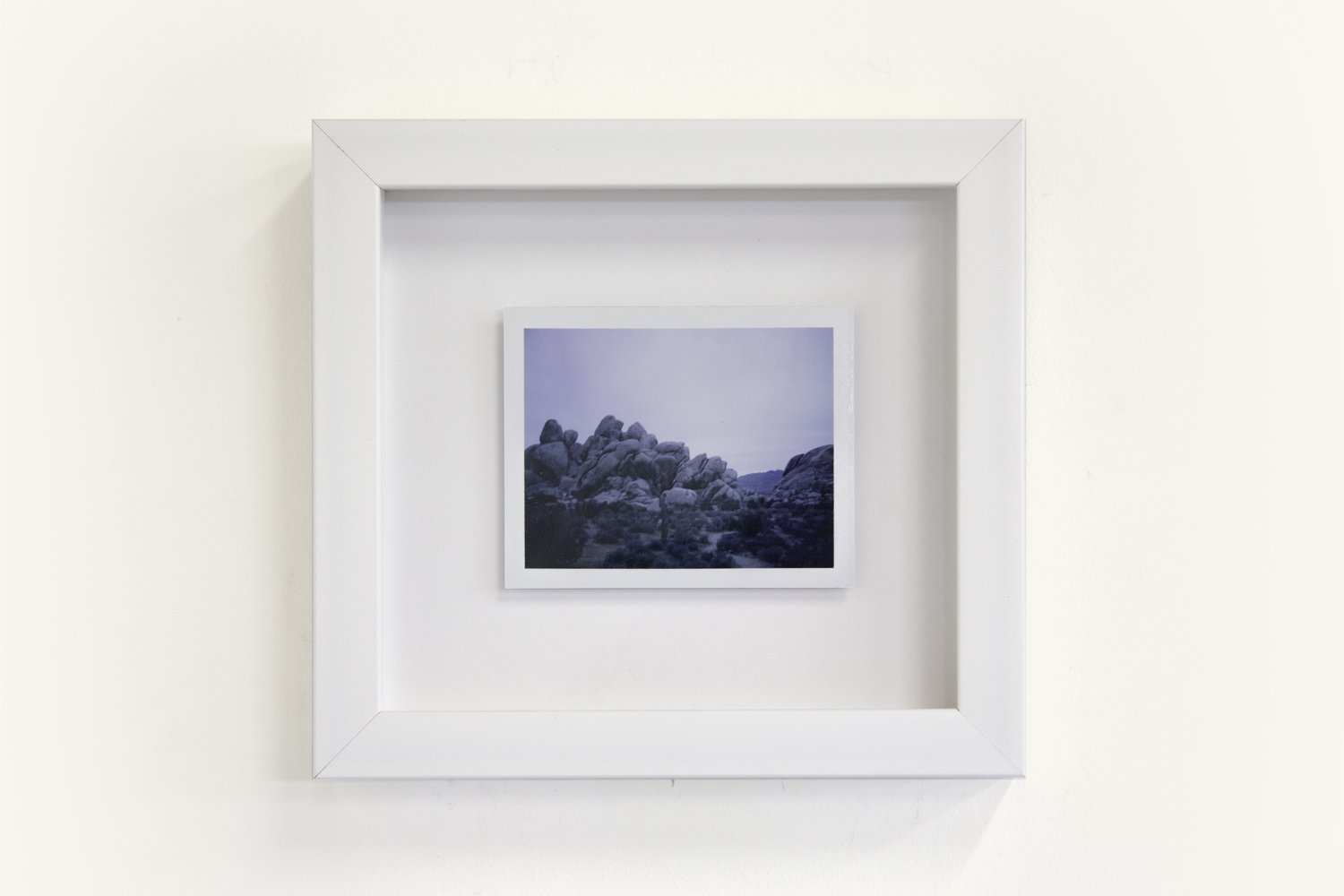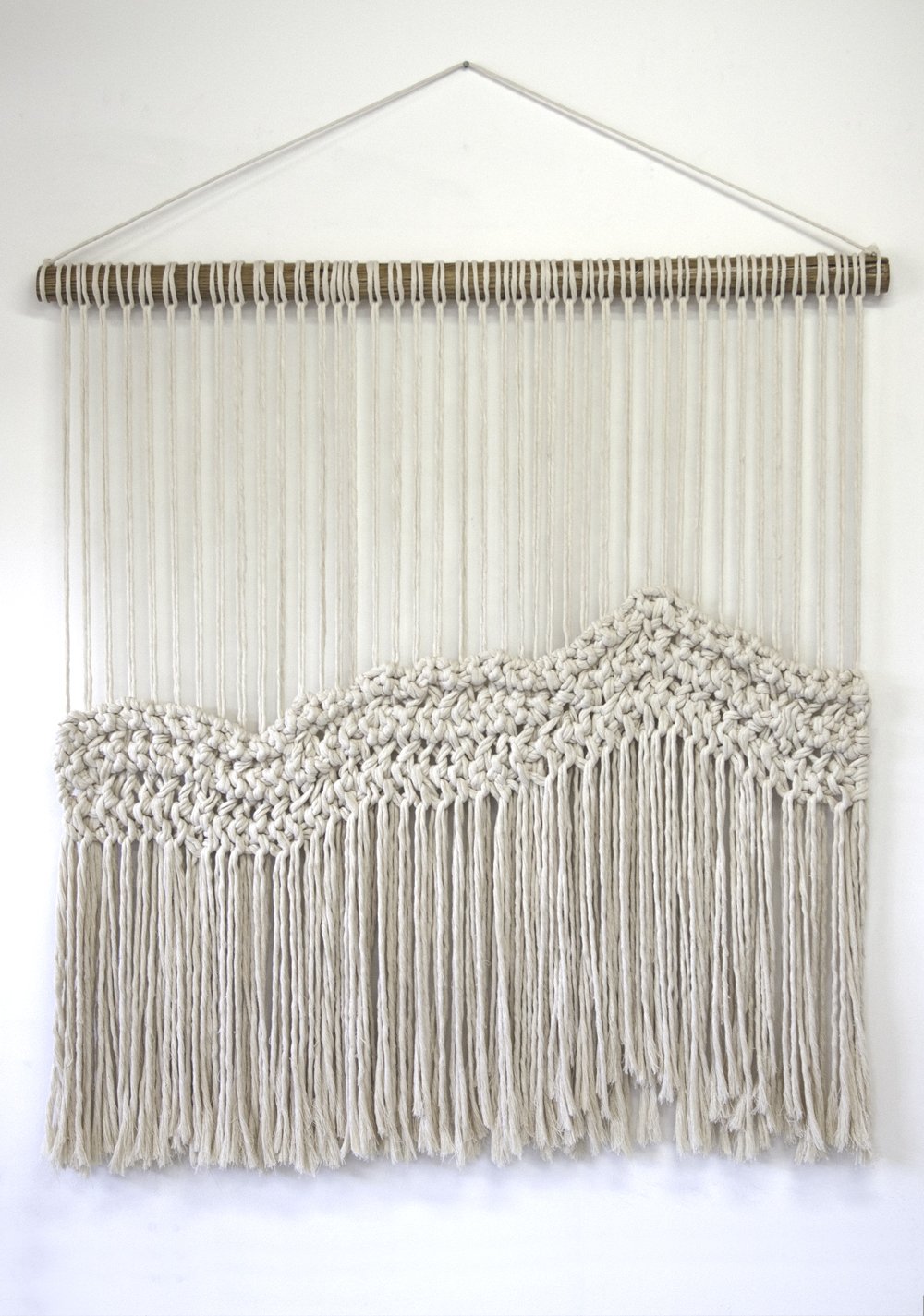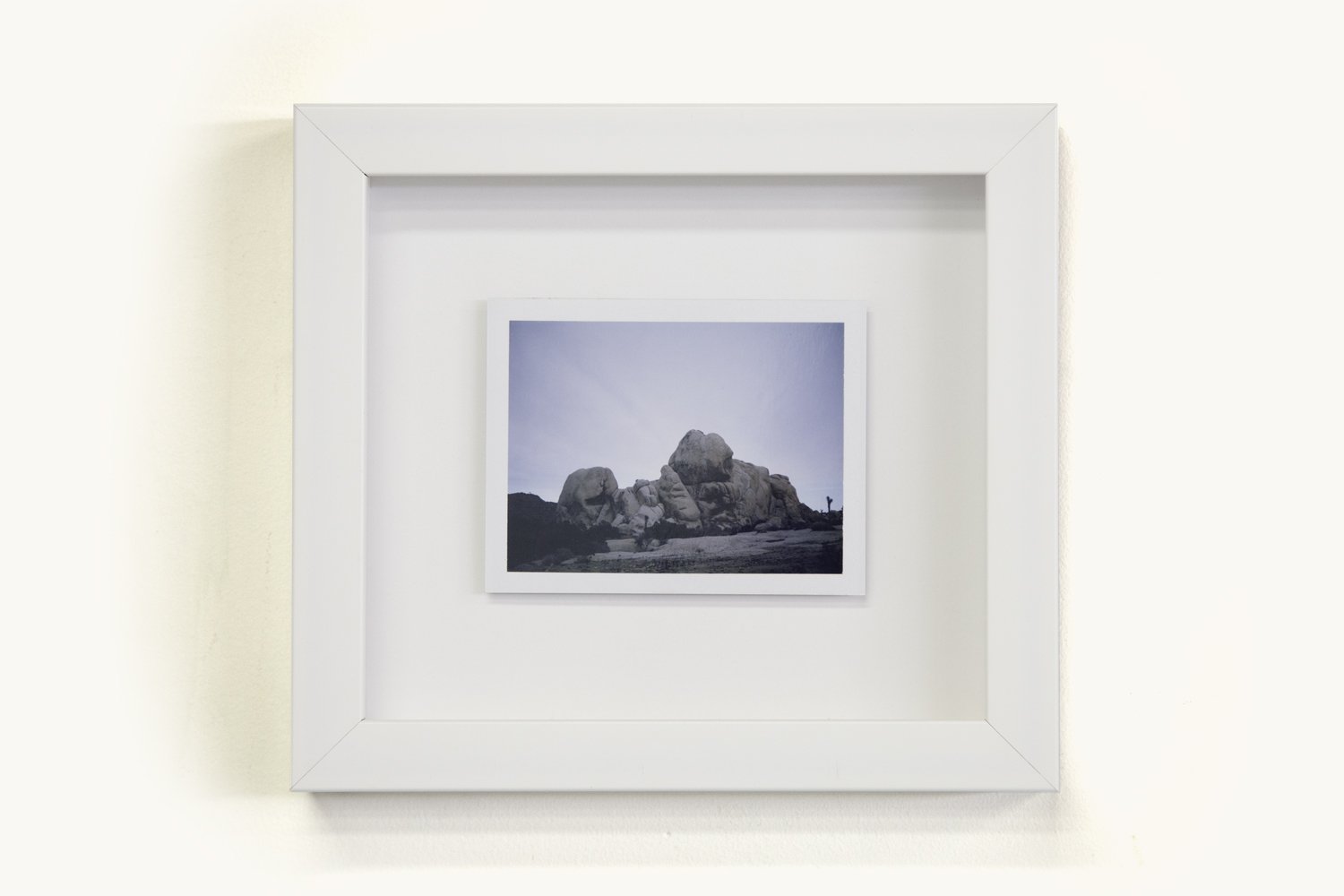Queering the Landscape
BoxoPROJECTS, Joshua Tree, CA, 2019
I created these pieces for a culminating solo exhibition as artist in residence at BoxoPROJECTS in Joshua Tree, CA—a town that exists on the fringe. It is a place where the earth is striking in its surface and structure, a land of otherworldly beauty belied by the complicated history of the American West. The land has no race or gender, yet the Eurocentric history of landscape painting in art is rife with racist, gendered, and sexualized overtones. In the traditional narrative of the western landscape, the land is female, its tamer is male. It is wild. It must be plowed, tilled, worked over, rid of natives, and made useful by patriarchal, hegemonic force.
Queering the landscape is a reaction against this narrative, filtered through the gaze of my genderqueer, Latinx identity. As a subversion of the historically hetero-male-dominated practice of landscape painting, I created these pieces by knitting (a medium connoting femininity) in a stitch called “faggoted fringe” (an intentional use of inadvertently queer wordplay found in A Second Treasury of Knitting Patterns, by Barbara G. Walker). For visual reference, I took photos of the rock formations, hills, and mountains inside Joshua Tree National Park, using a 1960s Polaroid Land Camera, inherited from a queer elder.
I rendered these knit and woven textile landscapes in the visual language of macrame, a vernacular art aesthetic nearly omnipresent in the California desert and found throughout many Latinx cultures. This kind of folk art style is often seen as other. It exists on the fringes, as do artists, queers, Black and brown folk, indigenous peoples, and even the desert itself. In this work, I seek not to elevate the folk, the faggoted, or the fringe. Rather, I reject the hierarchy that considers them lower, and seek to knit together these distinctions by claiming “other” as a way of viewing the world and queering the practice of representing place.













